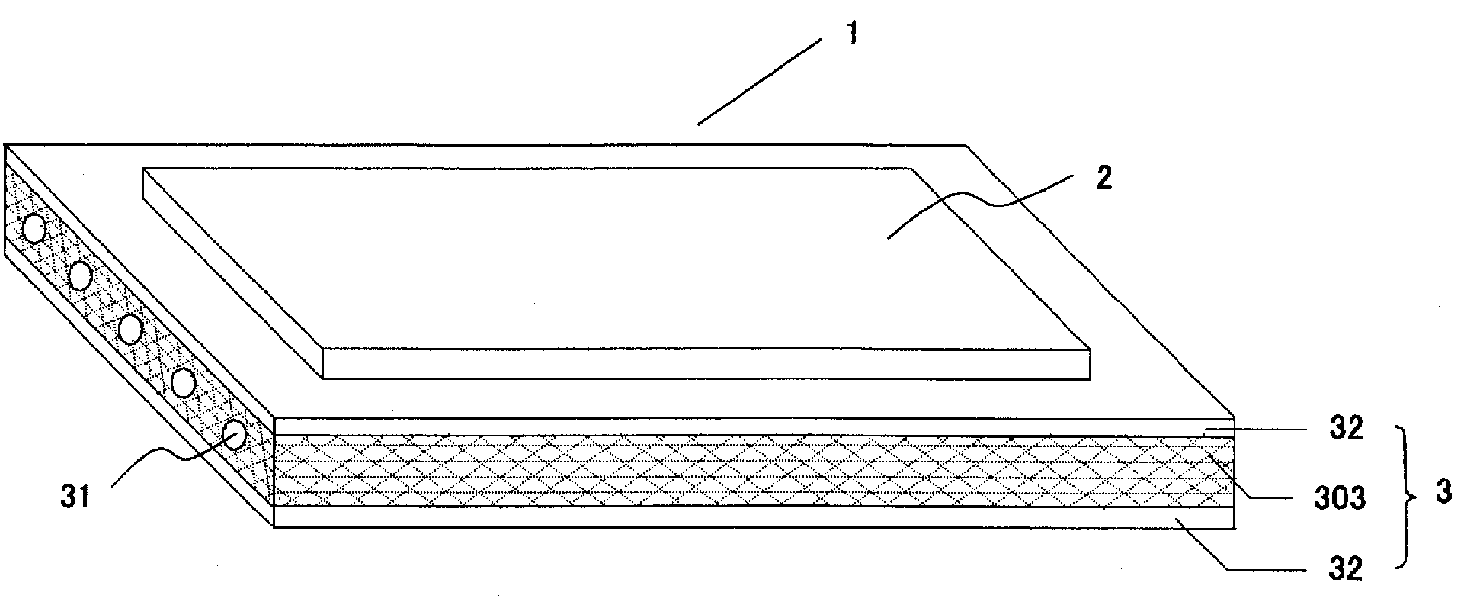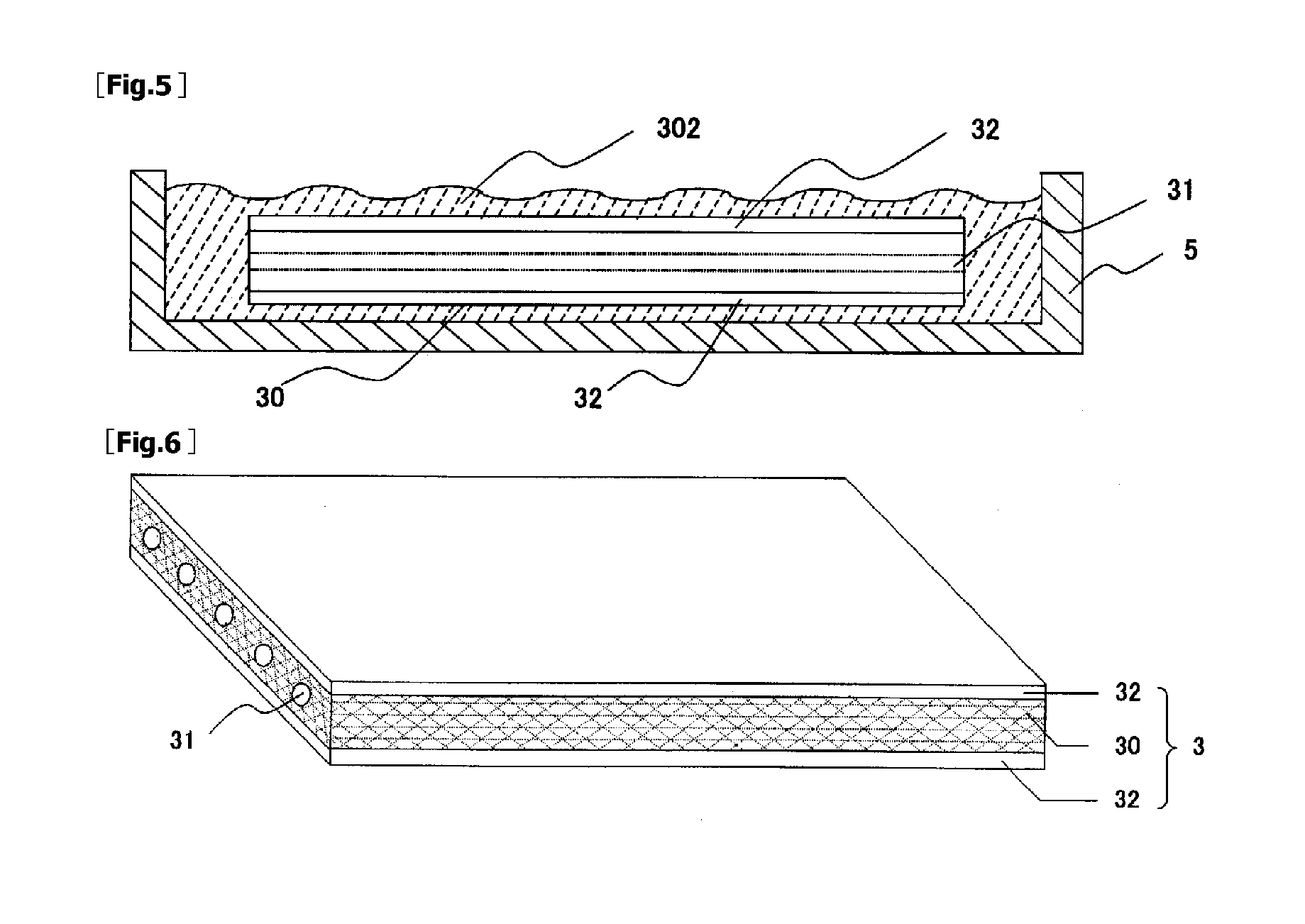Method for manufacturing a sputtering target structure
a target structure and sputtering technology, applied in the direction of diaphragms, metal-working apparatus, metallic material coating processes, etc., can solve the problems of no more reuse, sputtering target may crack, and large deformation, and achieve stable sputtering, low cost, and the effect of reducing the linear expansion coefficien
- Summary
- Abstract
- Description
- Claims
- Application Information
AI Technical Summary
Benefits of technology
Problems solved by technology
Method used
Image
Examples
example 1
[0084]This is described with reference to the drawings.
[0085]Five stainless steel pipes 31 (outer diameter 15 mm, pipe wall thickness 1 mm) were aligned in an iron chamber 4 having a length of 2,000 mm a width of 400 mm and a depth of 40 mm, at regular intervals in the cross direction of the chamber (the distance between the side of the chamber and the outermost pipe in the cross direction was 30 mm), in such a manner that the distance from the bottom surface or the top surface of the chamber to the pipe could be the same (FIG. 2). The space 41 was filled with a reinforcing material, or that is, carbon fibers 301 having a diameter of 8 μm and a length of 10 mm so that the volume percentage of the carbon fibers in the space 41 could be 30%. Next, 5% by weight of silica sol was cast into it, dried at 100° C., then fired in nitrogen at 700° C., and thereafter the iron chamber 4 was removed to obtain a carbon fiber shaped article 30 with the stainless steel pipes 31 built therein (FIG. ...
example 2
[0092]In the same manner as in Example 1, five copper pipes (their cross section is oval, having a major diameter of 25 mm, a minor diameter of 8 mm and a pipe wall thickness of 1.5 mm) were aligned in the same iron chamber as that used in Example 1. A mixed silicon carbide powder (#120 / #400=3 / 1) was formed into a slurry with 3% silica sol in such a manner that the powder content could be 500 g / liter. The slurry was cast into the space of the iron chamber. This was dried at 120° C., and then fired in air at 600° C., and a silicon carbide shaped article with copper pipes built therein was thus obtained.
[0093]In the same manner as in Example 1, a copper plate was disposed on both faces of the shaped article. Also similarly, an aluminium melt was cast into the chamber and solidified under high pressure, and a backing plate was thus obtained, comprising a composite material of aluminium and silicon carbide, having copper pipes built therein, and having copper plates disposed on both sur...
PUM
| Property | Measurement | Unit |
|---|---|---|
| thickness | aaaaa | aaaaa |
| thickness | aaaaa | aaaaa |
| thickness | aaaaa | aaaaa |
Abstract
Description
Claims
Application Information
 Login to View More
Login to View More - R&D
- Intellectual Property
- Life Sciences
- Materials
- Tech Scout
- Unparalleled Data Quality
- Higher Quality Content
- 60% Fewer Hallucinations
Browse by: Latest US Patents, China's latest patents, Technical Efficacy Thesaurus, Application Domain, Technology Topic, Popular Technical Reports.
© 2025 PatSnap. All rights reserved.Legal|Privacy policy|Modern Slavery Act Transparency Statement|Sitemap|About US| Contact US: help@patsnap.com



